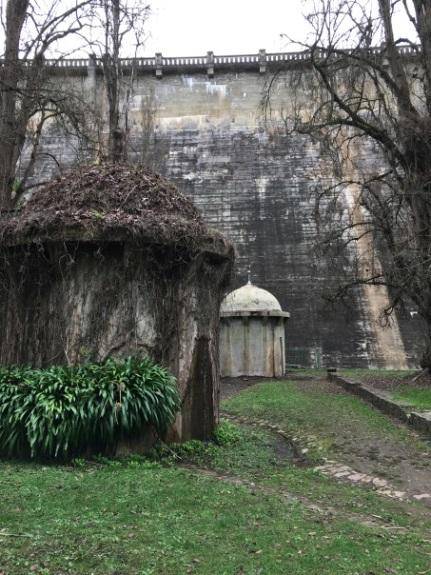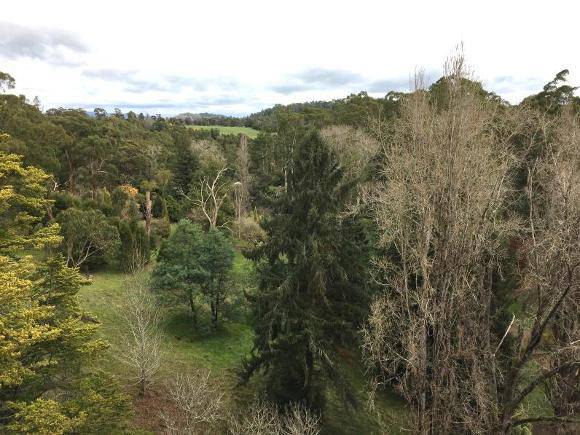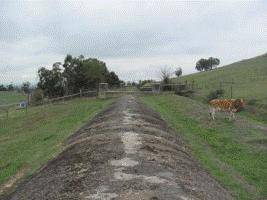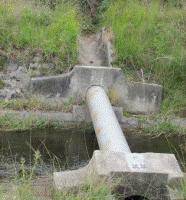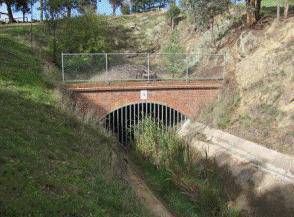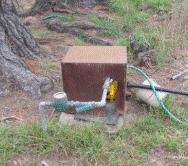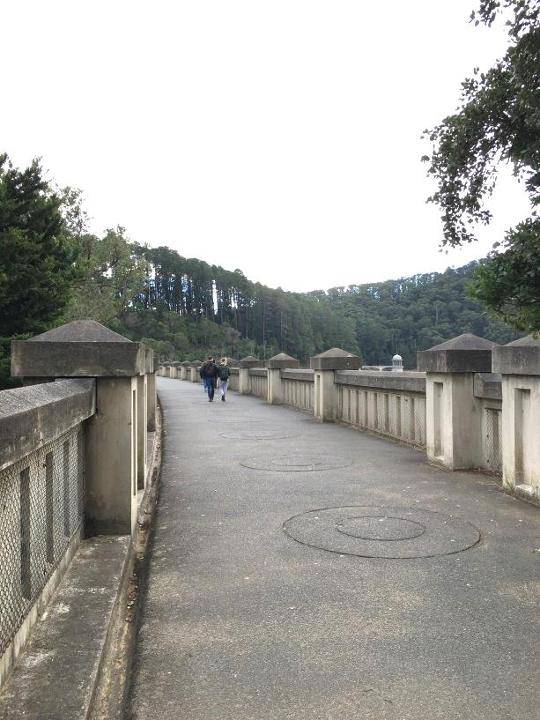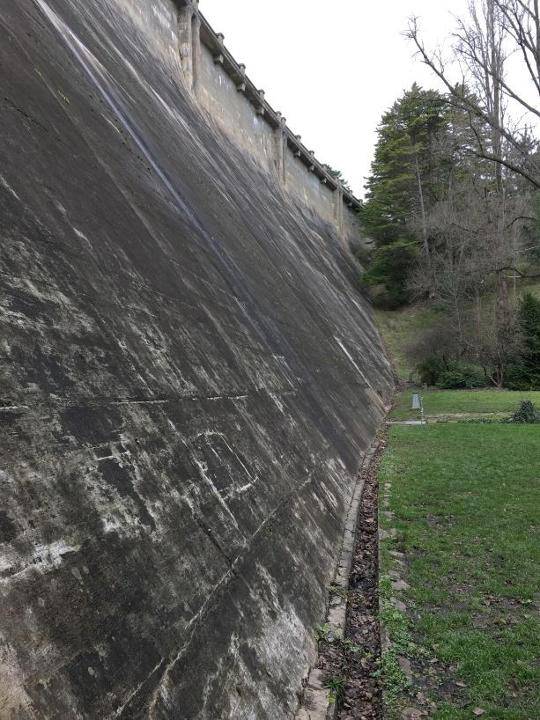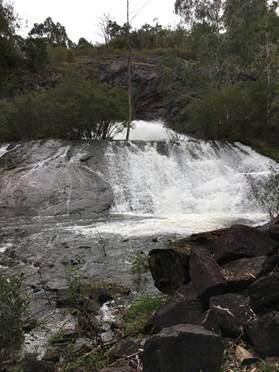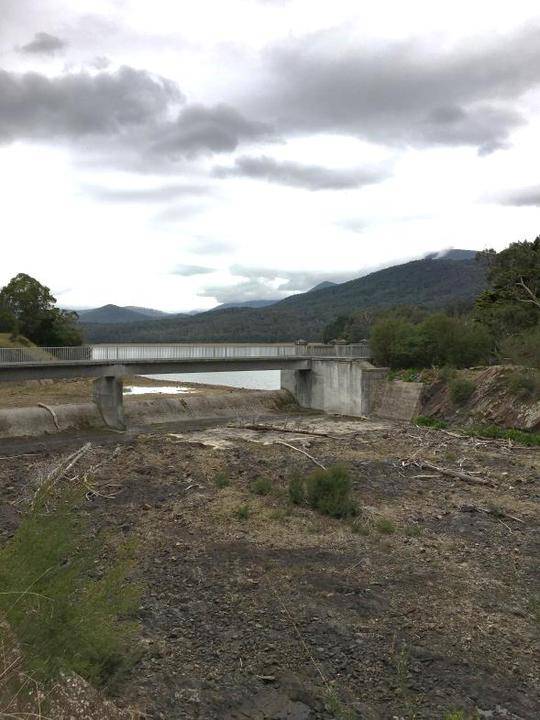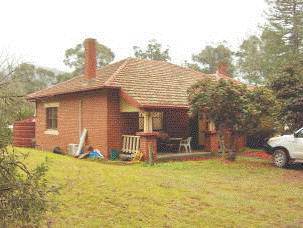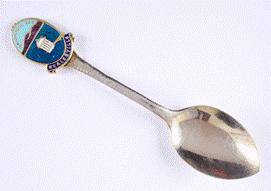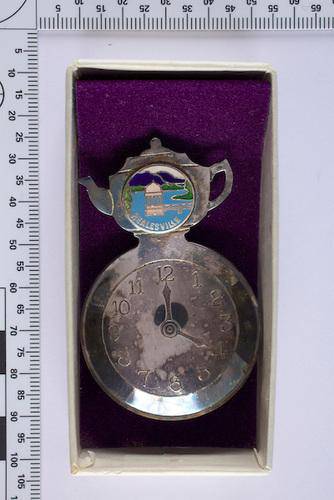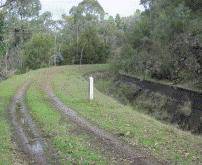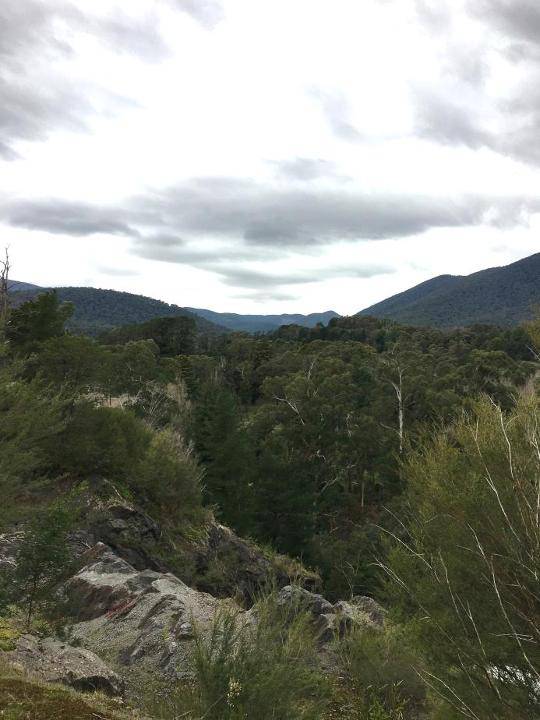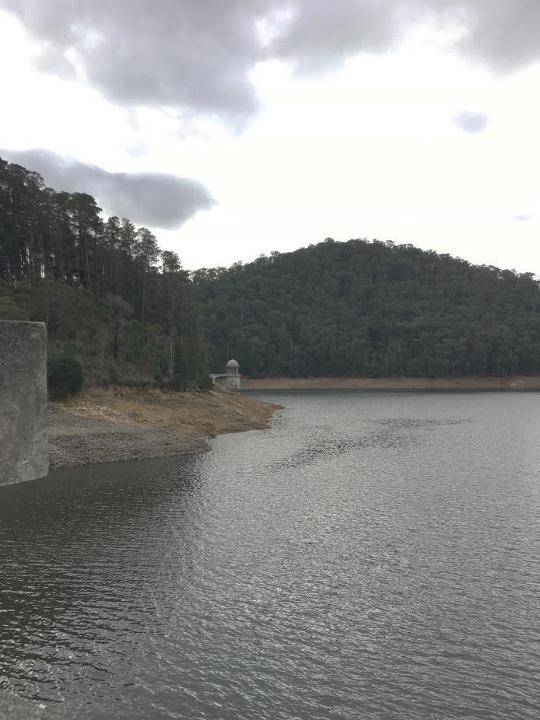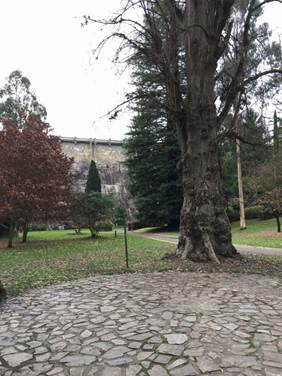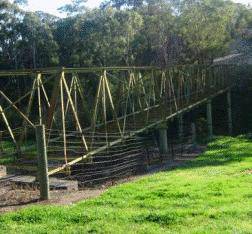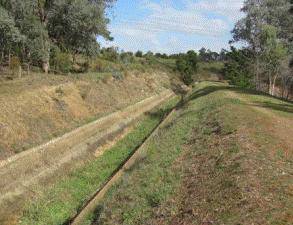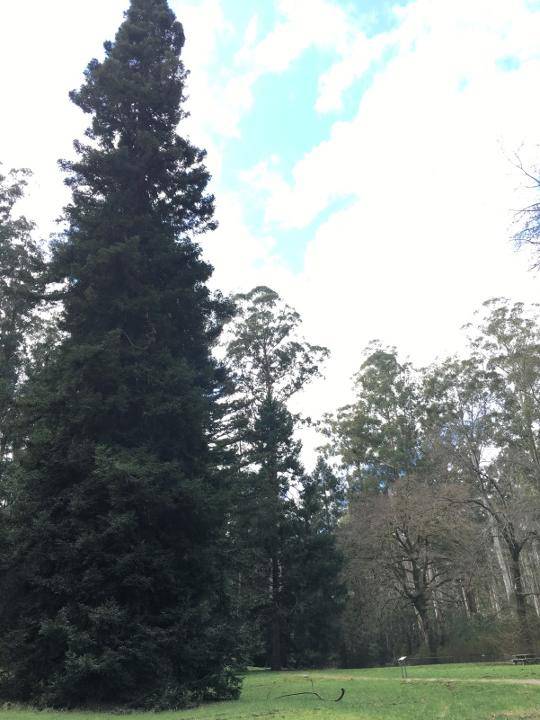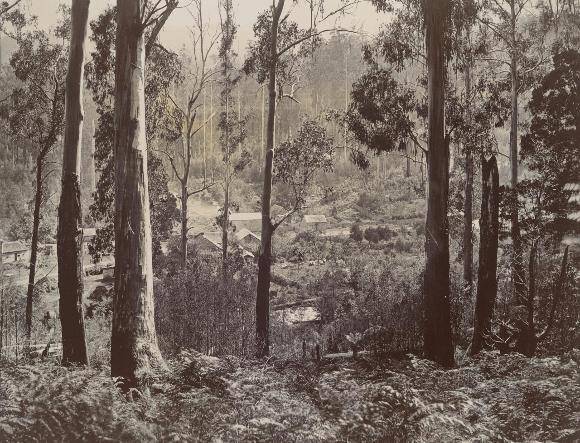| Back to search results » | Back to search page » |
|
MAROONDAH WATER SUPPLY SYSTEM (UPPER AND CENTRAL SECTIONS)
Statement of Significance
What is significant?
The Maroondah Water Supply System including but not limited to the Watts River catchment, the location of the former township of Fernshaw, including oak and redwood trees, the Maroondah dam and reservoir, outlet tower, two valve houses, caretakers cottage, caretakers huts, weirs and their associated picnic areas, aqueduct, tunnels, siphons, pipes, drains and scours from the south western edge of the Yarra Ranges to Diamond Creek, Junction Basin at Preston and the Plenty River Pipe Bridge at Greensborough. It also includes Maroondah Reservoir Park comprising roads and paths, two rotundas, fences and gates and extensive tree planting and gardens.
History Summary
The Maroondah Water Supply System was operational from 1891 and is Melbourne's second large scale water supply system. The system was built because the Yan Yean Water Supply System constructed in 1853 (VHR H2333) was no longer able to serve the growing population of Melbourne and the water quality was poor. During the early 1870s, the Watts River and its tributaries were surveyed and considered suitable for either a diversion weir or reservoir. The Watts River catchment was gazetted in 1886 and construction began on what was originally known as the Watts River System in the same year. The Watts River System comprised a weir on the Watts River east of Healesville and an aqueduct with open channels, tunnels and pipes which joined with the Yan Yean system at Junction Basin, Preston. Originally known as the 'Watts River Scheme' it was renamed the Maroondah Water Supply System when it was officially opened by the Governor of Victoria, the Earl of Hopetoun, in 1891. Water supply was increased with additional weirs and aqueducts in 1893, and again in 1909. The second stage of the scheme was completed in 1927, with the construction of the Maroondah dam and reservoir. Each stage incorporated picnic areas for the enjoyment of visitors, culminating with the construction of the Maroondah Reservoir Park in 1927. The upper section of the Maroondah Water Supply System remains operational, while the central section of the aqueduct was entirely decommissioned in the mid 2000s but remains intact.
Description Summary
The Maroondah Water Supply System comprises the Watts River catchment and water collecting infrastructure near Healesville, and an aqueduct
which runs from Healesville to Greensborough. The weirs, dam and reservoir, outlet tower and valve houses are located on the eastern side of Healesville and are set against the backdrop of mountain ranges which make up the Watts River catchment. The Maroondah Reservoir Park is located at the foot of the dam wall and is formally
laid out with stone paths, caretakers cottage, garden structures and planted with trees mostly planted to Hugh Linaker's 1928 plan. The outlet tower, balustrade at the top of the dam, and valve houses at the foot of the dam reference classical architecture and are particularly striking against the backdrop of native vegetation. Publicly accessible picnic areas are located at Badger Creek Weir and Donnelly's Weir. The upper section of the aqueduct (Healesville to Yarra Glen) is operational and largely intact with tunnels, open and covered channels, siphons, pipes, drains and scours. The central section from Yarra Glen to Diamond Creek has been decommissioned but the route remains evident and most infrastructure survives.
This site is located on the traditional land of the Wurundjeri people.
This site is located on the traditional land of the Wurundjeri people.
How is it significant?
The Maroondah Water Supply System is of historical significance to the State of Victoria. It satisfies the following criteria for inclusion in the Victorian Heritage Register:
Criterion A
Importance to the course, or pattern, of Victoria’s cultural history.
Criterion B
Possession of uncommon, rare or endangered aspects of Victoria’s cultural history.
Criterion D
Importance in demonstrating the principal characteristics of a class of cultural places and objects.
Criterion H
Special association with the life or works of a person, or group of persons, of importance in Victoria’s history.
Why is it significant?
The Maroondah Water Supply System is significant at the State level for the following reasons:
The Maroondah Water Supply System is historically significant as one of Victoria’s earliest major infrastructure projects which contributed to the continued growth and development of Melbourne and continues to provide water to Melbourne via the Sugarloaf Reservoir. The first stage of the Maroondah Water Supply System was constructed between 1886 and 1891 after it became apparent that the Yan Yean Water Supply System (VHR H2333) could no longer meet demand. The Maroondah Water Supply System harvested water from the Watts River catchment which was gazetted in 1886 as a closed catchment which ensured water purity and the reduction of water borne diseases such as typhoid. The catchment is an early example of compulsory land acquisition and required the removal of the entire township of Fernshaw. The picturesque design of the functional elements of the system, and the landscaping of the Maroondah Reservoir Park demonstrates the Melbourne and Metropolitan Board of Works (MMBW) policy of creating large infrastructure systems which were also places of beauty and recreational activity. The Maroondah Reservoir Park contains many mature trees from the 1928 design by Hugh Linaker.
(Criterion A)The Watts River Catchment associated with the Maroondah Water Supply System is rare in Victoria, and in Australia. It comprises 43,300 acres of bushland which was gazetted in 1886 and closed to all activity except water catchment. It represents an early and uncommon example of the compulsory acquisition of land for sanitary reasons.
(Criterion B)The Maroondah Water Supply System has a clear association with the process of water supply and demonstrates the principal characteristics of the class of place ‘water supply systems’, including the dam, reservoir, weirs, the various components of the aqueduct, and associated recreational areas. The Maroondah Water Supply System is a notable example of the class of ‘water supply systems’ and displays most if not all of the principal characteristics of such a system. The plantings and hard landscaping created from 1927 as the Maroondah Reservoir Park, as well as the valve houses, outlet tower and dam wall balustrading are a fine example of the MMBW’s philosophy of combining functionality with beauty.
(Criterion D)The Maroondah Water Supply System has a clear association with William Davidson, Inspector General of Public Works and Chief Engineer of the Melbourne Water Supply who was responsible for the design and construction of the system and for the establishment of the Watts River catchment in the late nineteenth century. He was important to Victoria’s history through his role in shaping Victoria’s infrastructure in the late nineteenth and early twentieth century.
The Maroondah Water Supply System also has a clear association with Hugh Linaker who designed numerous gardens and parks throughout Victoria. The Maroondah Reservoir Park was designed by Linaker and is a good example of his ability to use contrasting combinations of species and growth patterns to create a cohesive setting. It is one of the most intact surviving examples of his work in Victoria.
(Criterion H)
Group
Utilities - Water
Category
Water Aqueduct


